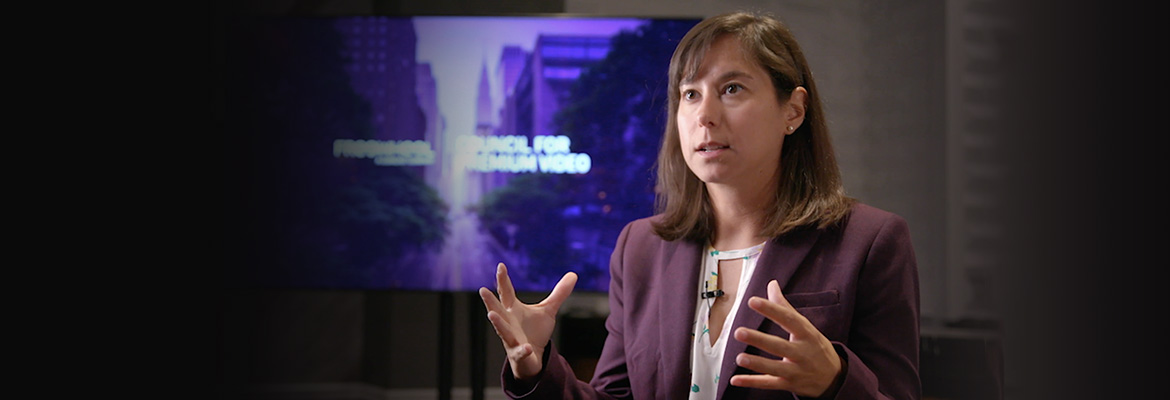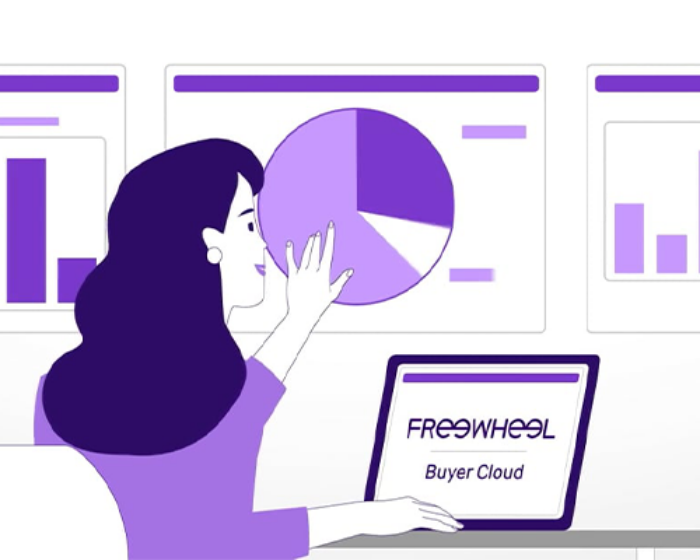Pictured: Sabrina Alimi, Exec. Director, Advisory Services, FreeWheel
During a FreeWheel Council for Premium Video meeting, the word on everyone’s lips was programmatic, now in the midst of a massive leap forward. FreeWheel, the media and technology arm of Comcast Advertising, presented its latest Video Marketplace Report, detailing that video ad views grew by 81% during the first half of 2022, with 27% of that attributed to programmatic transactions.
At the council, industry leaders discussed the substantive shift they’ve seen toward programmatic advertising, particularly in the premium video ecosystem, the way they’re seeing budgets incorporate programmatic, and the audience targeting that is helping propel the success of this shift.
What’s driving the shift to programmatic?
As with any major industry move, the shift from direct insertion orders (IOs) to programmatic ad buys is based on flexibility, controlled ad environments and, perhaps most importantly, results.
“We’ve seen a massive shift in programmatic, but I think it’s the way in which programmatic is transacted—programmatic, guaranteed programmatic, direct private marketplace deals—that has quickly helped it become commonplace,” said Darren Olive, executive VP of ad sales at Crackle Plus.
Olive said he sees about 50% to 60% of Crackle Plus’ business being transacted on a programmatic direct basis. “In upfront environments, we’ve seen a lot of budgets move from direct IO into programmatic guaranteed, which is great for us,” he said. “It gives us the flexibility to shift budgets around, and it gives the client the flexibility as well.”
Olive said Crackle Plus looks at it as controlling the experience, the programming and the content that delivered to viewers across such channels as ad-supported video on demand (AVOD) and free ad-supported streaming TV (FAST).
“Even if you’re buying our inventory on a programmatic basis, we guarantee the ability to know exactly where your ad is running and the contextual environment that you’re getting,” he said. “We make sure that there is trust between us and the advertiser or agency, so they know that they’re paying us for a proper, protected environment.”
It’s all the same pool
While the viewing landscape is expanding—basic linear and streaming TV now include AVOD and FAST channels, connected TV (CTV) and TV everywhere—the need to simplify the advertising backend is growing. With viewers fragmented across different devices and streaming services, it can be difficult for advertisers to know whether to buy this one show or that one platform.
But programmatic’s ability to streamline and automate segments of these deals in turn gives clients greater control over the elements they know need more attention. The ease with which programmatic allows advertisers to know that a significant portion of their ad buy is protected and guaranteed—FreeWheel’s report found that 85% of programmatic deals being placed are guaranteed—likely accounts for the uptick in buys this past year. FreeWheel projects that by 2026, half of all ad buys will be programmatic.
Abbie Reichner, VP of programmatic strategy and operations at Fox, added that it’s not just upfront registered dollars that are being used on programmatic, but scatter budgets as well. “We’re seeing programmatic becoming more incorporated in core buyer strategies from early on in the upfront negotiations. It’s really driving this aggressive increase in programmatic,” she said.
This is in line with FreeWheel’s findings: Advertising campaigns that include both linear and digital are best situated to aggregate total audience and maximize reach. Having a fluidity between direct IO and programmatic funding helps both the buy and sell sides. “We have to make it easier to buy our inventory,” Reichner said. “Agencies are overworked. We have to make it easy to buy and manage the businesses we are responsible for.”
As always, remember the audience
The distribution landscape of premium video is constantly expanding, but so too is its audience engagement. The Video Marketplace Report indicated that the number of households carrying four or more subscription streaming services have increased 218% since 2019. As such, all kinds of industries are joining the fray.
“Really big brands that are looking for maximum reach are obviously leaning heavily into programmatic,” said Joseph Lerner, executive director of supply activation at Xumo. “Think CPG, auto, QSR, different financial companies—any category that is using a ton of data to target a specific audience.”
However, just because data-driven decisioning is all the rage doesn’t mean it’s necessary for every ad buy. And of course, even with these big moves to programmatic, certain types of programming will still benefit from the human touch of direct IOs and placement. But overall, the goal of programmatic as a transaction type is to simplify the whole ad-buying process.
“It’s about bringing together buying, reporting, attribution and measurement, so that a client, brand or agency can look at it and spend across multiple different device types in one consolidated place,” Lerner said.
This content has been modified from the original article published here on AdAge.com



